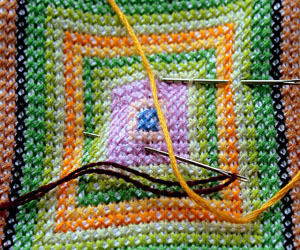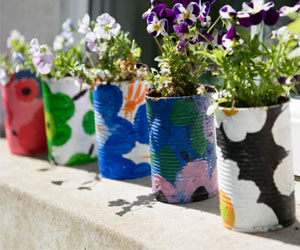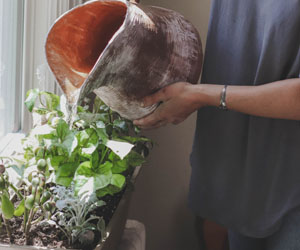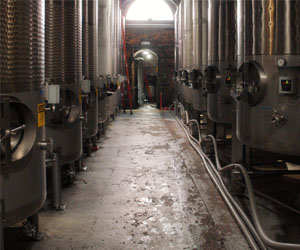


Nurturing Your Inner Glow

In a world where the beauty industry has long been associated with glossy advertisements, airbrushed models, and promises of instant transformations, a new paradigm is emerging. Health-conscious beauty, a concept rooted in the idea that beauty is more than skin deep, is gaining momentum. This approach focuses on nourishing and enhancing one's natural beauty through practices that prioritize overall health and well-being.
The Foundations Of Health-Conscious Beauty
Health-conscious beauty starts with a fundamental shift in mindset. It encourages individuals to view beauty as a reflection of inner health, emphasizing the importance of a holistic approach to self-care. Rather than relying solely on external treatments and products, it emphasizes cultivating a healthy lifestyle, which, in turn, radiates on the outside.
Nourishing From Within
The skin is often considered a mirror of one's overall health, and health-conscious beauty acknowledges this fact. Consuming a balanced diet rich in vitamins, minerals, and antioxidants provides the essential building blocks for healthy skin and hair. Nutrient-dense foods, such as leafy greens, colorful fruits, and omega-3-rich fish, can contribute to a radiant complexion and lustrous locks.
Hydration is another cornerstone of health-conscious beauty. Proper hydration not only keeps the skin plump and glowing but also supports the body's natural detoxification processes. Drinking an adequate amount of water, along with herbal teas and hydrating foods, can help maintain skin's elasticity and clarity.
Clean And Mindful Skincare
While external beauty products aren't shunned in health-conscious beauty, the focus is on clean and mindful skincare choices. Avoiding products containing harmful chemicals and opting for natural or organic alternatives is essential. These choices help protect not only the skin but also the environment.
Consistent skincare routines, tailored to individual skin types and concerns, are also encouraged. These routines may incorporate natural ingredients such as aloe vera, tea tree oil, and chamomile for their soothing and healing properties. By being mindful of the ingredients in their beauty products, health-conscious beauty enthusiasts ensure that they are only putting the best on their skin.
Holistic Self-Care
Beyond diet and skincare, health-conscious beauty advocates for a holistic self-care regimen. This includes regular exercise to improve circulation, reduce stress, and maintain overall health. Yoga, meditation, and mindfulness practices are also embraced for their stress-reducing benefits, as chronic stress can negatively impact the skin and hair.
Adequate rest is vital for health-conscious beauty, as it allows the body to repair and regenerate. Getting enough sleep not only minimizes dark circles and puffiness but also helps in maintaining a fresh and vibrant appearance.
Embracing health-conscious beauty means recognizing the interplay between one's inner and outer selves. By prioritizing nutrition, clean skincare, and holistic self-care, individuals can achieve a radiant and healthy glow that goes beyond superficial beauty. This approach not only enhances physical appearance but also fosters a sense of well-being and self-confidence that is truly transformative. As the health-conscious beauty movement continues to grow, more people are discovering that true beauty comes from within, and it's a journey worth embarking upon.
A Time-Honored Craft With Global Diversity
 Asian Brewing Traditions: Asia boasts an array of distinctive brewing traditions. Sake, a Japanese rice wine, is an integral part of Japanese culture, with centuries of tradition and craftsmanship. China, on the other hand, has a rich history of brewing rice-based beers like Qingdao, which are now appreciated globally. South Korea is known for its popular rice-based brew, Makgeolli, a traditional and lightly sparkling beverage.
Asian Brewing Traditions: Asia boasts an array of distinctive brewing traditions. Sake, a Japanese rice wine, is an integral part of Japanese culture, with centuries of tradition and craftsmanship. China, on the other hand, has a rich history of brewing rice-based beers like Qingdao, which are now appreciated globally. South Korea is known for its popular rice-based brew, Makgeolli, a traditional and lightly sparkling beverage.
Beer As A Cultural Symbol: Brewing traditions often intertwine with cultural, religious, and social customs. In places like Germany, beer gardens and Oktoberfest celebrations are iconic social gatherings. In Mexico, Day of the Dead festivals include offerings of beer to honor the deceased. Throughout history, beer has played a significant role in ceremonies, rituals, and community bonding.
Global Fusion And Innovation: The brewing world is a global stage where traditions blend and evolve. Brewers often take inspiration from different regions and styles, resulting in fusion brews that incorporate elements of various brewing traditions. For example, the emergence of "Belgo-American" beers combines the brewing traditions of Belgium with the innovative spirit of American craft brewing.
Brewing Traditions In The Modern Era: In today's interconnected world, brewing traditions are shared and celebrated globally. The rise of international beer festivals, beer competitions, and the craft beer movement is a testament to the enduring appeal of brewing. It's a dynamic and ever-evolving craft where old meets new, and traditions find new life in the hands of innovative brewers.
Finding Clarity In A Noisy World
 Personal Growth: By contemplating your life and experiences, you can set goals, make plans, and track your progress more effectively. Quiet reflection is a valuable tool for personal development and self-improvement.
Personal Growth: By contemplating your life and experiences, you can set goals, make plans, and track your progress more effectively. Quiet reflection is a valuable tool for personal development and self-improvement.
Now, let's explore how to incorporate quiet reflection into your daily life:
Set Aside Time: Schedule specific time each day for quiet reflection. This could be as brief as a few minutes or longer, depending on your preferences and availability.
Choose A Peaceful Environment: Find a quiet and comfortable place where you won't be disturbed. It might be a corner of your home, a park, or a quiet room in your workplace.
Disconnect: Put away electronic devices during your reflection time. Turn off notifications and resist the urge to check your phone, emails, or social media.
Breathe: Start your reflection with deep, calming breaths. This simple exercise can help you relax and transition into a state of mindfulness.
Journal: Consider keeping a reflection journal. Write down your thoughts, feelings, and insights during your quiet moments. Journaling can help you track your progress and clarify your thinking.
Mindfulness Meditation: If you find it difficult to stay focused, mindfulness meditation techniques can guide you in maintaining concentration during reflection.
Gratitude Practice: Reflect on the things you're grateful for. This practice can shift your perspective towards a more positive and appreciative outlook on life.
Creating Beauty From Discards
 Environmental Benefits
Environmental Benefits
One of the most compelling aspects of repurposed materials is their positive environmental impact. By upcycling, we reduce the need for new resources, which saves energy and conserves raw materials. This practice significantly lessens the burden on landfills and cuts down on pollution generated during the production of new items.
Resourcefulness And Creativity
Repurposing materials encourages resourcefulness and sparks creativity. When working with limited resources, artists often find innovative solutions to turn discarded items into functional and beautiful pieces. This process can lead to fresh ideas and designs that stand out for their uniqueness.
Artistic Expression And Uniqueness
Repurposed materials are celebrated for their artistic expression and uniqueness. Each piece tells a story, preserving the history and character of the original materials. Whether it's a coffee table made from an old door or a lamp fashioned from discarded industrial equipment, these creations are one-of-a-kind.
A Sustainable Lifestyle
Repurposed materials fit perfectly within the framework of a sustainable lifestyle. By incorporating upcycled items into your home or daily life, you contribute to a more eco-friendly world. Not only do you reduce your carbon footprint, but you also promote the principles of recycling, reusing, and repurposing.
Decorating Your Herb Garden
 Symmetrical Or Geometric Layouts: Create symmetrical or geometric patterns in your garden, such as circular herb beds or rectangular planters. These structured designs can bring a sense of order and formality to your garden.
Symmetrical Or Geometric Layouts: Create symmetrical or geometric patterns in your garden, such as circular herb beds or rectangular planters. These structured designs can bring a sense of order and formality to your garden.
Herb Borders: Plant herbs along the edges of garden beds or walkways to define the space and create an organized, neat appearance.
Decorative Planters And Containers
Your choice of planters and containers can be a focal point in your herb garden:
Terracotta Pots: The rustic charm of terracotta pots adds a timeless elegance to your garden. Consider using pots of various sizes and shapes for a curated look.
Decorative Containers: Opt for unique and decorative containers like vintage crates, wooden barrels, or painted ceramics. These containers can be both functional and ornamental.
Hanging Baskets: Hang herbs in decorative baskets, allowing them to cascade gracefully. This not only saves space but also adds a touch of whimsy to your garden.
Vertical Planters: Vertical herb planters, such as living walls or pocket planters, are not only space-efficient but also create a captivating visual display.
Garden Decor And Art
Incorporating garden decor and art pieces can enhance the visual appeal of your herb garden:






A Journey Of Craftsmanship And Creativity
 3. Wood Selection: Choosing the right wood is a fundamental step. Different woods have varying characteristics, such as hardness, grain pattern, and color. As a beginner, it's wise to begin with softwoods like pine or cedar due to their ease of workability. Once you gain experience, you can move on to hardwoods like oak, maple, and cherry.
3. Wood Selection: Choosing the right wood is a fundamental step. Different woods have varying characteristics, such as hardness, grain pattern, and color. As a beginner, it's wise to begin with softwoods like pine or cedar due to their ease of workability. Once you gain experience, you can move on to hardwoods like oak, maple, and cherry.
4. Measuring And Marking: Accurate measurements and precise markings are the backbone of woodworking. Learn to use measuring tools, such as tape measures, squares, and calipers. Understand the significance of measuring twice and cutting once, as even minor measurement errors can affect the outcome of your project.
5. Wood Joinery: Wood joinery refers to the methods used to connect pieces of wood together. Basic joint types like butt joints, lap joints, and dowel joints are a good place to start. As you advance, explore more complex joints such as mortise and tenon, dovetail, and finger joints. Proper joinery is essential for strong, stable, and aesthetically pleasing woodworking projects.
6. Finishing Techniques: The finishing touches can make or break a woodworking project. Learn about the various finishing techniques, including sanding, staining, and applying protective coatings like varnish or polyurethane. Proper finishing not only enhances the appearance of your work but also protects it from the elements and wear and tear.
7. Woodworking Plans: For beginners, it's often helpful to work from pre-designed woodworking plans. These plans provide step-by-step instructions, detailed drawings, and a list of necessary materials and tools. Working with plans can help you understand the construction process and build your confidence in the craft.
A Creative Path To Wellness
 Mindfulness: Crafting encourages mindfulness, which is the practice of being fully present in the moment. When you're immersed in a creative project, your focus shifts to the task at hand. This state of mindfulness can reduce symptoms of anxiety and depression and improve overall well-being.
Mindfulness: Crafting encourages mindfulness, which is the practice of being fully present in the moment. When you're immersed in a creative project, your focus shifts to the task at hand. This state of mindfulness can reduce symptoms of anxiety and depression and improve overall well-being.
Self-Esteem: Completing a craft project can provide a significant boost to self-esteem and self-worth. Seeing your creations come to life fosters a sense of accomplishment, pride, and a positive outlook on your abilities.
Distraction From Negative Thoughts: Crafting serves as a productive and enjoyable distraction from negative or intrusive thoughts. By focusing on the project, you can redirect your mental energy away from worries and concerns.
Social Connection: Crafting can be a social activity, allowing you to connect with others who share your interests. Joining crafting communities, attending workshops, or crafting with friends can provide a sense of belonging and reduce feelings of isolation.
Emotional Expression: Craft projects offer a creative outlet for emotional expression. Whether it's through painting, writing, or other crafts, you can channel your emotions and experiences into your creations, helping you process and cope with challenging feelings.
Neurological Benefits: Engaging in creative activities has been associated with changes in brain chemistry. These changes can lead to improved cognitive function, enhanced problem-solving skills, and a decrease in symptoms of mental health disorders.